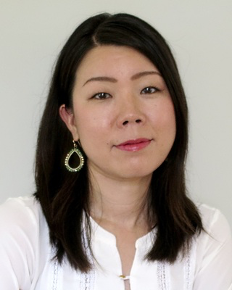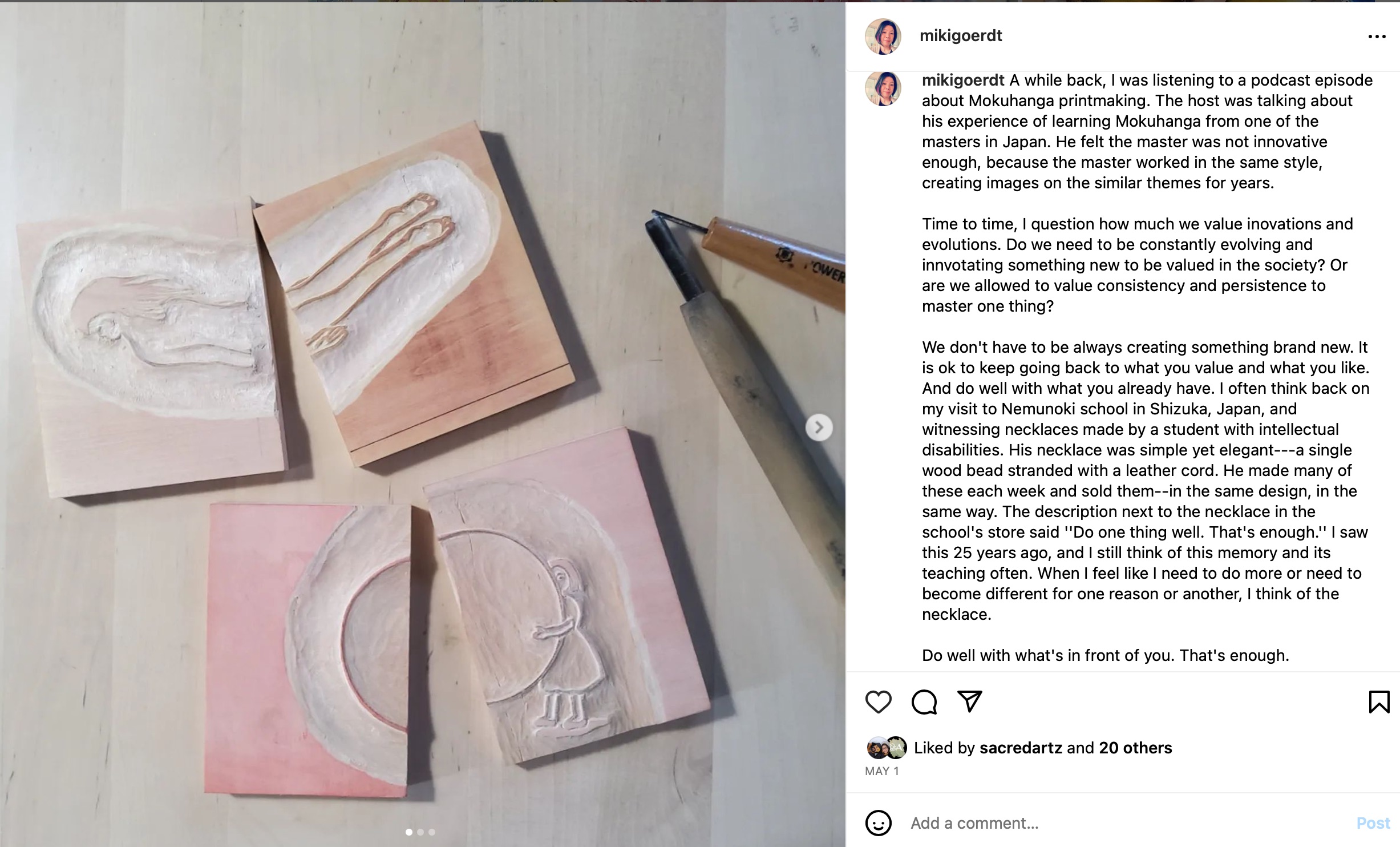May 14, 2023 | By Miki Nishida Goerdt, LCSW, LCSW-C, ATR-BC
Join Miki Nishida Goerdt and panelists Jayashree George, DA, ATR-BC, LMFT, SEP, Tsz Yan (Winnie) Wong, MAATC, ATR, and Joyce Yip Green, PhD, LMFT, ATR-BC for a special virtual event for Asian American Heritage Month, May 20th: Asian/Asian American Art Therapists: Embodying the Contexts.
Life experiences and events often do not make sense right away. This was especially true for me as she moved to the United States after high school, away from my home country of Japan. Art became a method for me to contemplate how to make space for difficult feelings, joy and losses in life, and alternative viewpoints. It has helped me to process and extract meanings out of my lived experiences as an immigrant and a woman of color in the United States. Throughout my life, art has been the main tool for me to make sense out of experiences in life and in society.
I recently chose Japanese woodblock printmaking, Mokuhanga, as an art medium in order to heal from the cultural identity loss I endured as I experienced assimilation in the United States. I have been learning the traditional way of printmaking from a teacher in Japan, initially in person and then through virtual sessions. Learning Mokuhanga means understanding Japanese cultural concepts, traditional customs, and value systems related to its creative process. Through Mokuhanga, I’m also understanding the cultural contexts behind my family and my childhood experiences. I feel more connected to my culture and its people through Mokuhanga, and I am reclaiming my cultural identity in order to be a whole person.

Penciling in designs over the printed Mokuhanga images.
Contextual Understanding as a Core Element for Art Therapy
As a board-certified art therapist, I use art to help people learn more about themselves, assist them in healing what hurts, and facilitate their growth. In doing so, I pay close attention to the contexts of my clients’ experiences. Culture is only one context out of many that they are influenced by. They don’t live in a silo; none of us do. Everything they experience is connected and influenced by multiple contexts they find themselves in: the environment, people around them, the history of the country they live, where their family came from, the political climate, types of oppressions they face, and their social locations, to name a few.
This is why one person’s depression may be different from their friend’s and need different treatments, even if both of them have the same diagnosis. Likewise, two clients with even the same Asian background in front of us may have very different contexts behind them, resulting in unique stories and reasons for their struggles. It is our responsibility as art therapists to seek understanding of the contexts behind their clients – so that clients are seen as whole human beings. And we are to do the same work for ourselves as art therapists – to understand who we are through examining the contexts we embody.
Miki Nishida Goerdt, LCSW, LCSW-C, ATR-BC
 Miki is an artist, board-certified art therapist, and a licensed clinical social worker. She owns a private practice in Falls Church, VA where she provides therapy sessions, consultation, and clinical supervision. She is also an adjunct faculty at George Washington University. She is passionate about working with older adults, immigrants, and people of color, and she is committed to applying anti-oppressive approaches in her clinical practice and pedagogy.
Miki is an artist, board-certified art therapist, and a licensed clinical social worker. She owns a private practice in Falls Church, VA where she provides therapy sessions, consultation, and clinical supervision. She is also an adjunct faculty at George Washington University. She is passionate about working with older adults, immigrants, and people of color, and she is committed to applying anti-oppressive approaches in her clinical practice and pedagogy.
More about her art practice can be found at www.mikigoerdt.com or Instagram at @mikigoerdt

